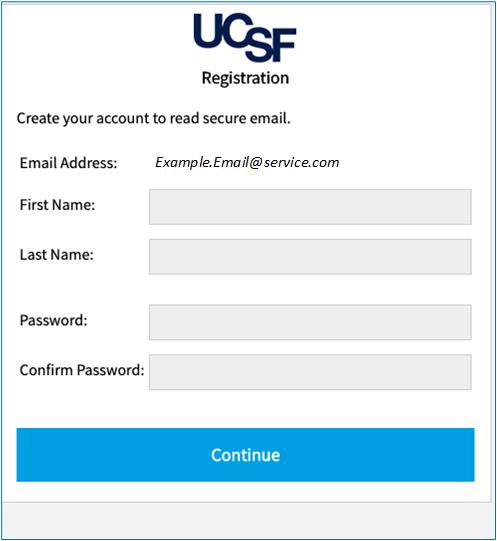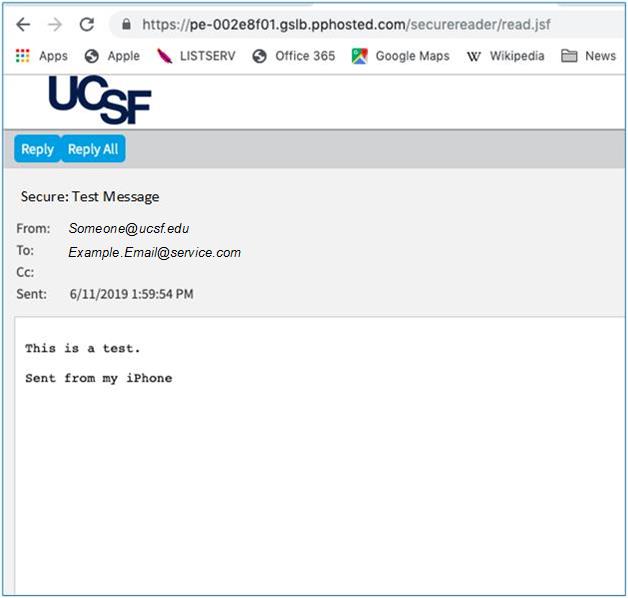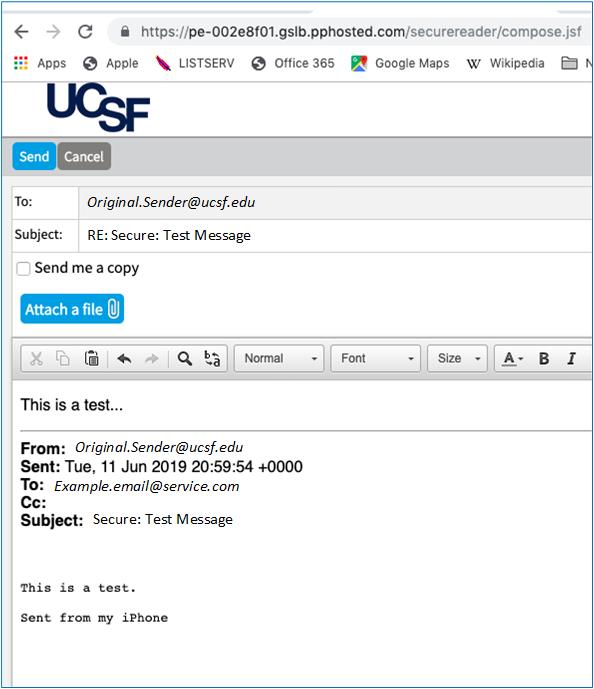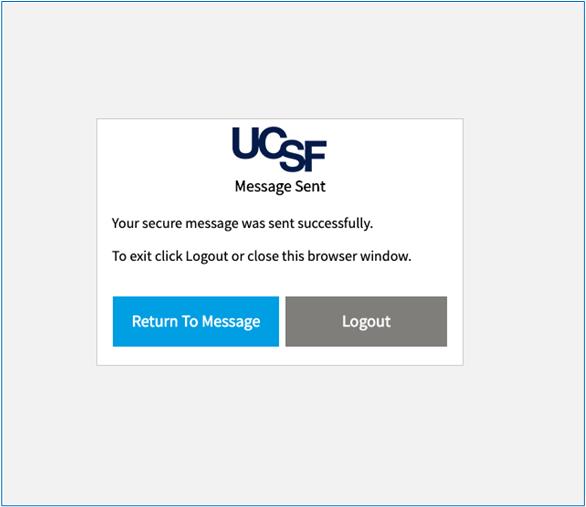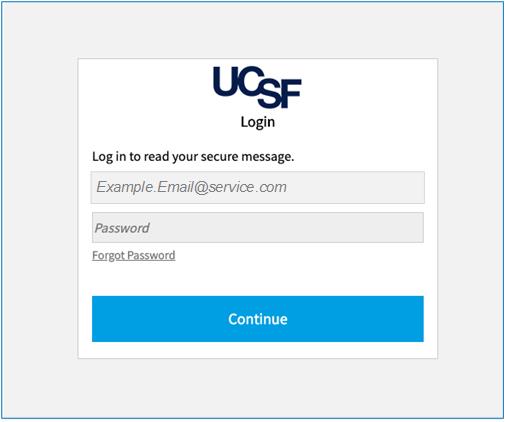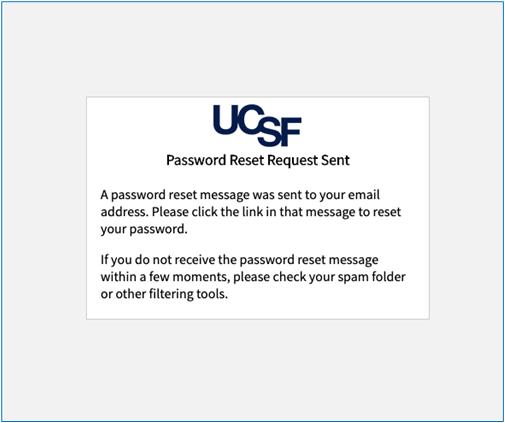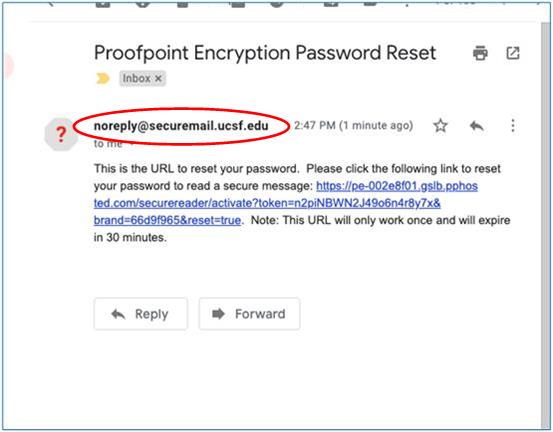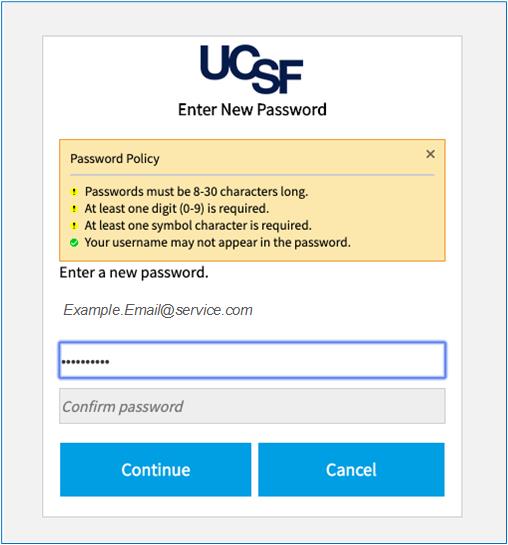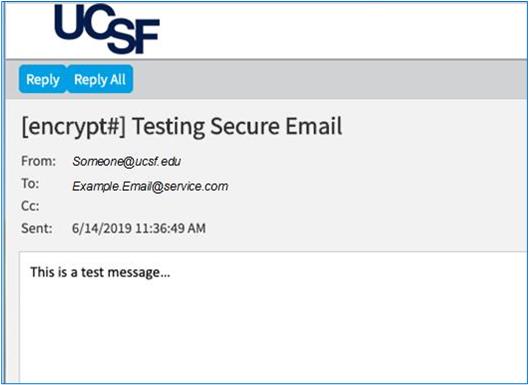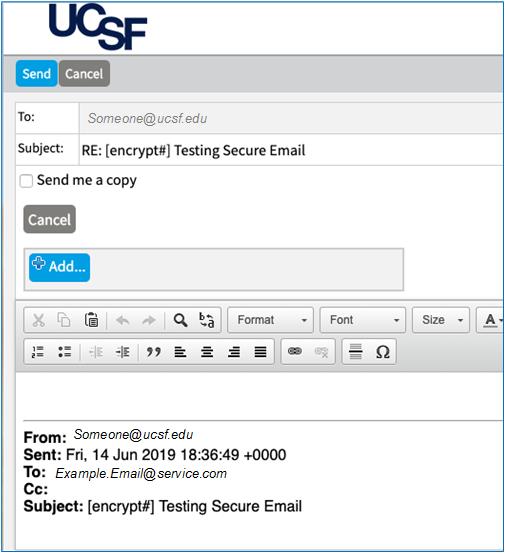This content is viewable by Everyone
Secure Email Recipient Help
- Audience: Affiliate, Faculty, Staff, Student, Technical Partner, Volunteer
- Service Category: Email & Collaboration
- Owner Team: IT DWS Collaboration
-
Service:Email
Introduction
You just received a "secure" email message from someone at UCSF. It's your first one, and you aren't sure what to do. This page is here to explain next steps and help you:
- Know that you are on the right site
- Register with our service
- Read and reply to your secure email message
- Reset your password
- Add an attachment
- Troubleshoot
Use the right siteOur secure email service is provided by a commercial vendor that specializes in email encryption, and it is hosted within their environment. The web address is not a UCSF location; instead, it contains the site in the image below. |
Register your new secure email accountIf this is your first secure email message from UCSF, you must create your email account before you can read it. There is a one-time registration process that will have you reading your message quickly. Let's get started. Here's an example of a secure email. To begin, click on the Click here link in the body of the message. (Note: Because this was sent to your email address, the email address is entered by the service and cannot be changed.) |
To assist you, the password policy (requirements) may be automatically displayed, depending on the type of device you are using to register. Passwords must:
Your password cannot include your username. Once you have entered your information:
|
Read and replyRegistration complete, you will now be presented with the secure message sent to you from someone at UCSF. After you have read your message, you can reply to it or log out of the secure email reader. To reply to your message, click the Reply button. |
You will be presented with a message composition window where you can write your reply. When finished, click the Send button. |
You will receive a Message Sent confirmation. From here, you can choose to return to the message or log out. To log out, click the Logout button. |
You only need to register with the secure email service the first time you access a message. After that, when you want to open a secure email, you will see the following login screen. To log in:
|
Reset your passwordWhen you click the Forgot Password link, you will receive a notification that an email message has been sent to the registered address with a link to reset your password. Go to your Inbox to check for this message. (If you don't see it in your Inbox, please check your spam or junk email folder.) |
When you check your Inbox, you should see a Password Reset message from the sender, [email protected]. (This is the only legitimate address; if the message is from a different address, it's spam. Delete it.) Note: The Password Reset Link is only good for 30 minutes. If you don't reset your password within this 30-minute period, you will have to go back and click the Forgot Password link on the login screen again to generate a new message. |
|
You will see your opened secure email message. When finished, you can log out of the secure email reader or reply to the message. |
Attach filesIf you choose to reply to the secure email, you may want to attach a file. To attach a file: 1. Click the Attach a file button. |
2. Click the Add button to browse your computer for the file you want to attach. 3. When you locate the file to be attached, select it and click the Open button in the browsing window. |
You will see the attached file linked to your message. Compose your message, then click the Send button. |
You will see a Message Sent notification. Click the Logout button to exit the secure email reader. |
Troubleshoot |
This section describes error messages and what they mean. The messages you could receive are in boldface type.
|


